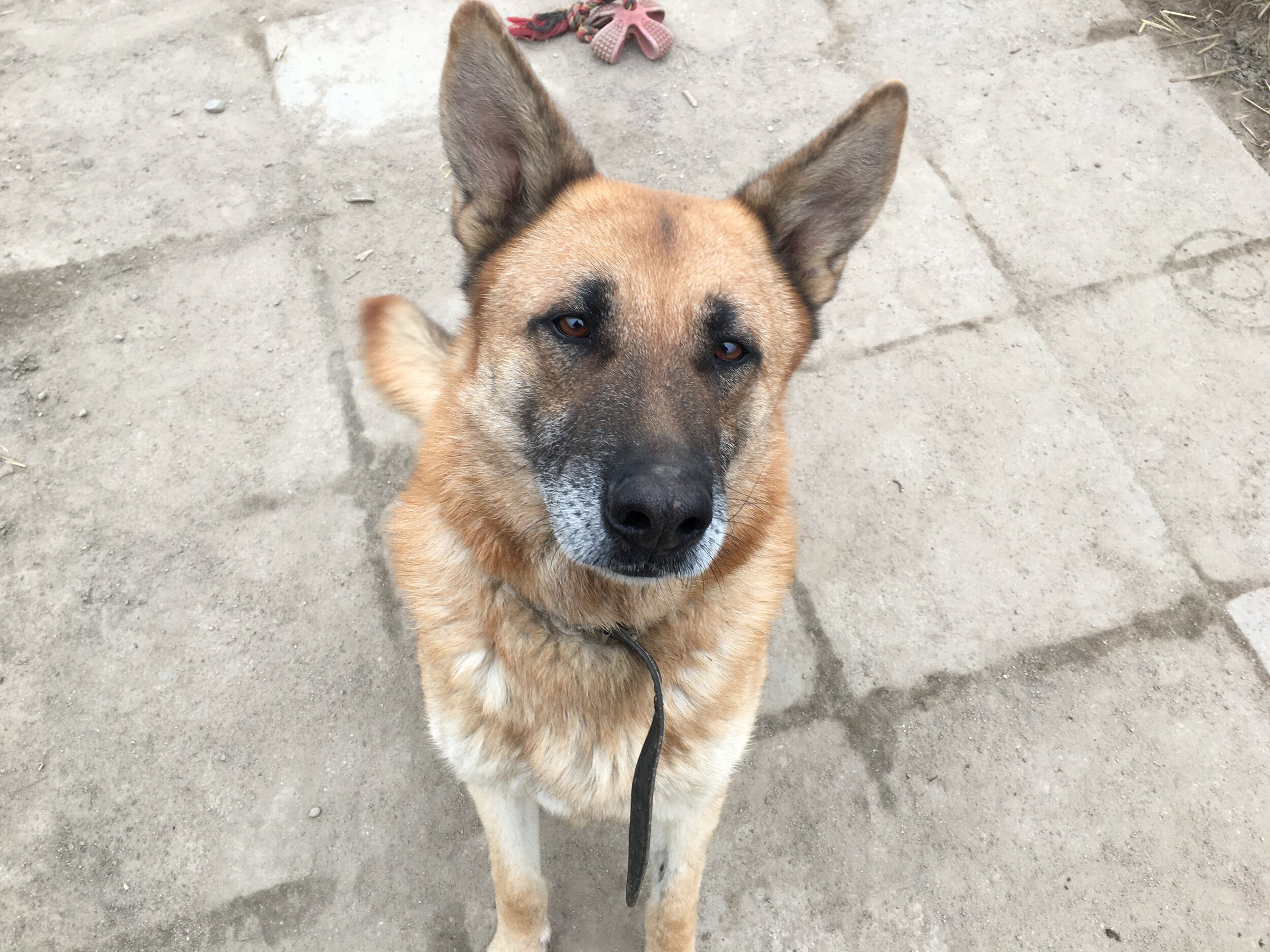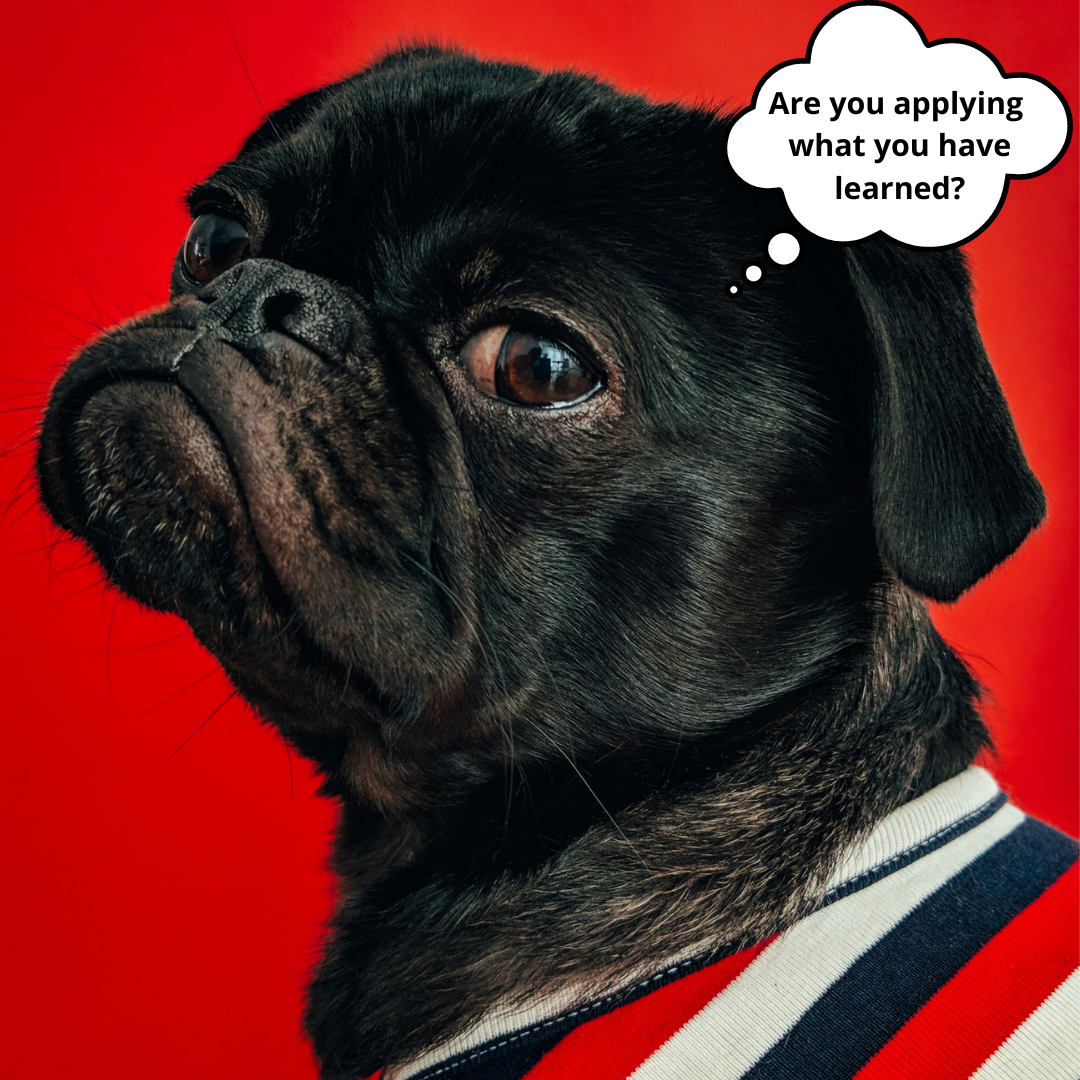Fear in dogs - how it looks like and what to do with it?
How to recognise fear in dogs?
Big eyes, ears back and tension on the forehead
Photo by Luis Villasmil on Unsplash
Dogs can be afraid of many different things, including other dogs, humans, noises, objects or being left alone. How does that look like when your dog is afraid of something? Signs that you can observe in your dog (many of them or only a few at a time):
Lip licking, lowered body posture, ears back and tension in the muscles
Photo by Zach Lucero on Unsplash
staring at the scary thing,
looking away or from the side,
having tense muscles, (his body can be stiffer)
his eyes can get bigger,
lowered body posture,
his ears get flattened,
if you were to anthropomorphise, you would say that he looks worried, almost like his eyebrows go up,
he can start to lip lick,
yawning,
panting,
cautiously putting his paws (very gently and carefully),
keeping one paw up,
tail tucked between the hind legs,
raised hair on the back of the neck,
shaking/trembling,
his body weight will be in the opposite direction from the scary thing like he tries to increase the distance from it or gets ready for a fight. It looks like his front paws want to investigate the thing but his back paws want to run away - the bodyweight is kept away from the object but there is also alertness towards it (in case the thing was going to attack),
some dogs can freeze and stop moving altogether,
some can start bouncing around the scary thing,
others can start barking at it,
some can run towards it and then flee again,
your dog can show displacement activities such as sniffing the ground or scratching,
he might attempt to hide.
Looking from the side, big eyes, tension in the forehead
Photo by Annie Cotnoir on Unsplash
Not everybody is good at recognising the signs (no one teaches that at school!) and your dog can have a full-blown anxiety attack by the time you notice something is up. We would like to notice precursors before it. It’s also context specific, so your dog might be perfectly relaxed and yawn or have wider eyes and bouncing around when he is excited. The more you pay attention to the subtle changes, the better you will become at recognising your dog's body language. Dogs don't come with the manual so it's normal we don't know everything. It's ok to not know something, it's ok to learn something new and it's absolutely great to change something if we feel it can be beneficial for our dog and for us.
What to do when we recognised fear?
Paw up could mean fear but also alertness and excitement
Photo by Erik Mclean on Unsplash
Living in fear is no fun and the quality of life is diminished. We would like to help our dog get more relaxed and have a stress-free life.
First of all, identify what are the triggers of fear (objects, humans, dogs, other animals) and how far from those objects can your dog be without showing any signs of fear. It's important to go "under the threshold". Fear and stress response inhibits learning. Inditefying how far from the scary thing your dog is still relaxed is your baseline that you should do your best to not cross it. I understand that keeping a desired distance from the unknown dog or person can be very difficult and sometimes impossible (dog walking out from an alley when you could not see him). The most important part is to minimise the risks and if necessary learning strategies to distract your dog from the scary stimuli. Take him out of that situation as soon as possible and continue keeping him under the threshold as soon as you can.
When you are under the threshold, we can start looking for appropriate reactions and when we have those, we can slowly start decreasing the distance.
Lip licking and leaning away
Photo by Eliott Van Buggenhout on Unsplash
I will suggest two procedures that can be used but in both of them, it’s important to keep the dog under threshold. One is to use food to make it into a positive experience, use either classical conditioning when you simply feed the dog something he loves in the presence of a scary thing but I would also suggest using operant conditioning where you also look for relaxed behaviours and reinforce them with food. Systematically make the relaxed body language more likely and slowly decrease the distance from the scary thing. The procedure is more complicated if the dog is scared of living things as we then also separately add their movement.
Big eyes
Photo by Charles Deluvio on Unsplash
The second, more controversial procedure is to use distance as a reinforcement. It would be negative reinforcement contingency, however, if you never see your dog go over the threshold, I would suggest that it doesn't have to be intrusive. It can be especially useful for dogs who don't want to eat anything in the presence of a scary thing. You see that your dog is noticing the object being far away, stays relaxed and you remove the object even further away (you will need two people to do it). By doing so you pair relaxed behaviour (previously defined and noticed in him) with the removal of the object. Previously his strategy was to get tensed, bark or flee from the object to increase the distance, now he stays relaxed and gets what he was after (which is the distance). It can be easy to go over the threshold and make the procedure go sideways but I would suggest that using food can also go wrong. The way to use negative reinforcement contingency successfully is to move in small increments, never cross the threshold and ultimately switch to positive reinforcement contingency. By showing that the scary objects move away without him needing to do anything, his fear can subsite enough that he will end up going to the object himself and investigate it. You can then pair that with the food.
If you’ve never done this before and you noticed that your dog is showing signs of fear, consider hiring a trainer/behaviourist who can help you learn the nuances. It’s easy to miss important things and make the problem worse.
What not to do?
Lip licking and looking away
Photo by LOGAN WEAVER on Unsplash
Don't force your dog to investigate the object that he is scared of. Don't ignore his behaviour and body language to convince him that there is nothing to be worried about. The fact that he is scared of something trivial might sound funny to you but when your dog is scared, it's not fun for him to investigate it. You might make the problem worse by ignoring his fear and forcing him to do what he wants to avoid. The ignored problem can develop into a much bigger problem, including aggression but also serious health problems if he stays in a prolonged state of stress.
Endnote
Working with fearful dogs is one of my favourite problems to work on. That's what I mostly deal with in the shelter. Sometimes fear can be very difficult to change in the shelter environment but seeing the change in the dog is incredible! The dog who previously didn't trust people is now greeting me and waiting happily to interact. In the shelter, the biggest reward is when I come back and the dog is no longer there, he found his forever home! Outside the shelter environment, they often come out of their shells much faster. When you learn to recognise the signs of fear in dogs and then work through it and see how much he changed - that's one of the most beautiful things to experience!
Be a superhero for your dog, he will love you for it!
Look at his body position, he is leaning away - that could mean that he tries to avoid being washed. Even though it doesn’t have to be fear, it’s important to take notice of the body position.
Panting could also indicate stress and/or fear.
Photo by Autri Taheri on Unsplash


















I'm feeling great and I prioritise health. I don't feel better than anyone else! I can enjoy feeling good about myself and hope for everyone else to enjoy themselves too. I believe that happiness is not something you achieve, it's something you DO. I'm choosing habits for happiness and I do them every day. I hope you can join me and start to seek happiness every day.